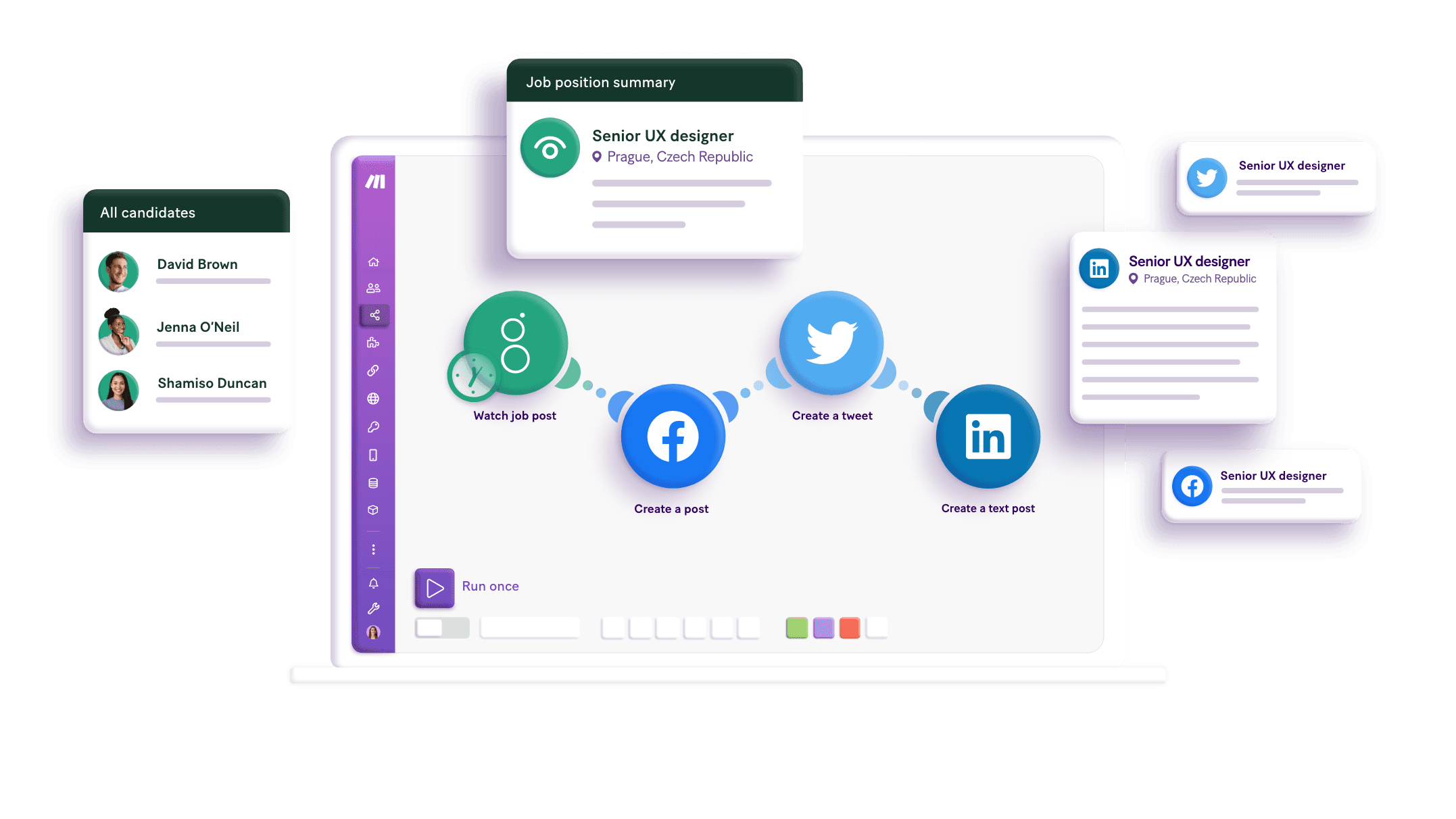Connect MonkeyLearn and Apify integrations
Connect MonkeyLearn and Apify with any of your favorite apps in just a few clicks. Design, build, and automate anything for your work by integrating apps like MonkeyLearn and Apify to create visual automated workflows. Choose from thousands of ready-made apps or use our no-code toolkit to connect to apps not yet in our library.
Trusted by thousands of fast-scaling organizations around the globe






Automate your work. Build something new.
Just drag and drop apps to automate existing workflows or build new complex processes. Solve problems across all areas and teams.

Build your MonkeyLearn and Apify integrations.
Create custom MonkeyLearn and Apify workflows by choosing triggers, actions, and searches. A trigger is an event that launches the workflow, an action is the event.
Classifies the text with a given classifier.
Creates a new classifier.
Deletes a classifier.
Extracts information from the text with a given extractor.
Fetches items from a dataset.
Returns information about a classifier including its settings, stats, and tags.
Returns information about an extractor.
Returns all the available classifiers for the user.
Returns all the available extractors for the user.
Popular MonkeyLearn and Apify workflows.
Looking to get more out of MonkeyLearn and Apify? With Make you can visually integrate MonkeyLearn and Apify into any workflow to save time and resources — no coding required. Try any of these templates in just a few clicks.
Find YouTube videos in a channel, summarize with ChatGPT, and email results
Discover YouTube videos within a specific channel, get concise summaries with ChatGPT, and receive the results via email. This streamlined process ensures you quickly access valuable information in an easy and informative format, enhancing your productivity and decision-making.
TRY IT ->Find YouTube videos by keywords, summarize with ChatGPT, and email results
Discover relevant YouTube videos using keyword search, get concise summaries with ChatGPT, and receive the results via email. This streamlined process ensures you quickly access valuable information in an easy and informative format, enhancing your productivity and decision-making.
TRY IT ->Fetch dataset items from Apify and create a completion with ChatGPT, then add a row to Google Sheets
Automatically fetch dataset items from Apify, generate a completion with ChatGPT, and add the results to Google Sheets for streamlined data management.
TRY IT ->Fetch dataset items from Apify and add them to Google Sheets
Automatically transfer Apify dataset items to Google Sheets after actor runs complete, streamlining data management and enhancing workflow efficiency.
TRY IT ->Run Apify tasks and add results to Google Sheets
Automatically run Apify tasks and fetch results to update Google Sheets. Streamline data processing by integrating Apify and Google Sheets for real-time insights.
TRY IT ->Run Apify actor and create records in Airtable from dataset items
Automatically run an Apify actor, fetch dataset items, and create records in Airtable. Streamline data processing and organization with Apify and Airtable integration.
TRY IT ->Analyze Google My Business reviews with MonkeyLearn and save it in Google Sheets
Every time a new review is added to your Google My Business location, Make will automatically analyze its sentiment (positive, neutral or negative) with a MonkeyLearn machine learning model. Then, the data is stored in Google Sheets. The template uses this [example spreadsheet](https://docs.google.com/spreadsheets/d/1XrTB8RgnTKwfADfk-aGqVNO0ftZubsNKdrKnLVFMOWw/edit?usp=sharing).
TRY IT ->Perform Dialogflow fulfillments with sentiment analysis
Every time a new Dialogflow fulfillment webhook is triggered, Make will automatically classify the query text by sentiment (positive, negative or neutral) with a MonkeyLearn Machine Learning model. Then, a specific fulfillment response is sent depending on the sentiment.
TRY IT ->Scrap prices from any page with HTML/CSS, Cloud Vision and MonkeyLearn
This template helps you perform data mining on on a website at regular intervals. First, a screenshot of the url is taken via HTML/CSS. Then, the screenshot's text is recognized with Google Cloud Vision (OCR) and the price is automatically extracted with a MonkeyLearn machine learning model. Eventually, the result is stored in Google Sheets.
TRY IT ->
FAQ
How it works
Traditional no-code iPaaS platforms are linear and non-intuitive. Make allows you to visually create, build, and automate without limits.






